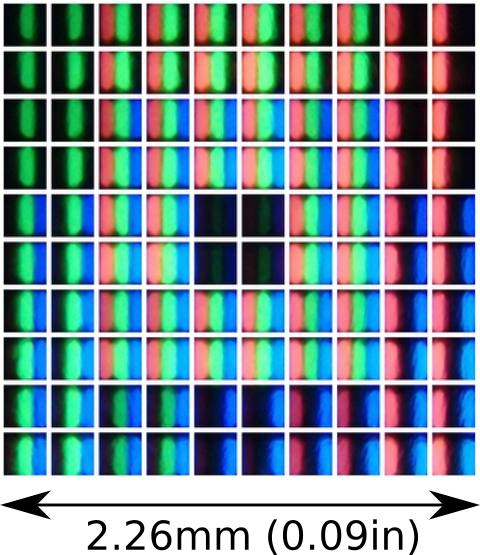PPI
PPI (or ppi) stands for pixels per inch and is a measure of the spatial pixel density. It indicates how many individual pixels can be placed in a 2.54 cm (1 inch) line.
Pixels are clearly defined color points in a fixed grid. Each individual pixel can take on color values from 1 bit (2 colors) to 48 bits (280 billion colors) depending on the product (sensor / light source). The terms PPI and DPI are often used synonymously due to their similar meaning.
PPI properties
- Fixed size per pixel
- Area-filling color per pixel
- Any color value 1 - 48 bit
PPI is used for all devices that can display many colors per pixel:
- Digital cameras
- scanner
- Monitors / screens
- projector
- Display
Different color values as pixels, 5x5 = 25 pixels. For the calculation of PPI, however, we need a length, since it does not indicate the number of pixels but the pixel density.
![]()
PPI calculation
PPI can be calculated using the following formula:
\(PPI = {Pixel \over Length (Inch)} = {pix \over in} = {pix * 25.4mm \over mm} \)
The same picture as shown above on an LCD display where we now have a length and can calculate PPI from it ( PPI calculator ):

\(PPI = {Pixel \over Length (Inch)} = {10 pix \over 0.09 in} = 111 PPI \)
Difference between DPI and PPI
PPI and DPI are calculated exactly the same, the only difference is in the definition of point and pixel . A point can have different sizes, while a pixel is always the same size. The following picture shows the difference again.
